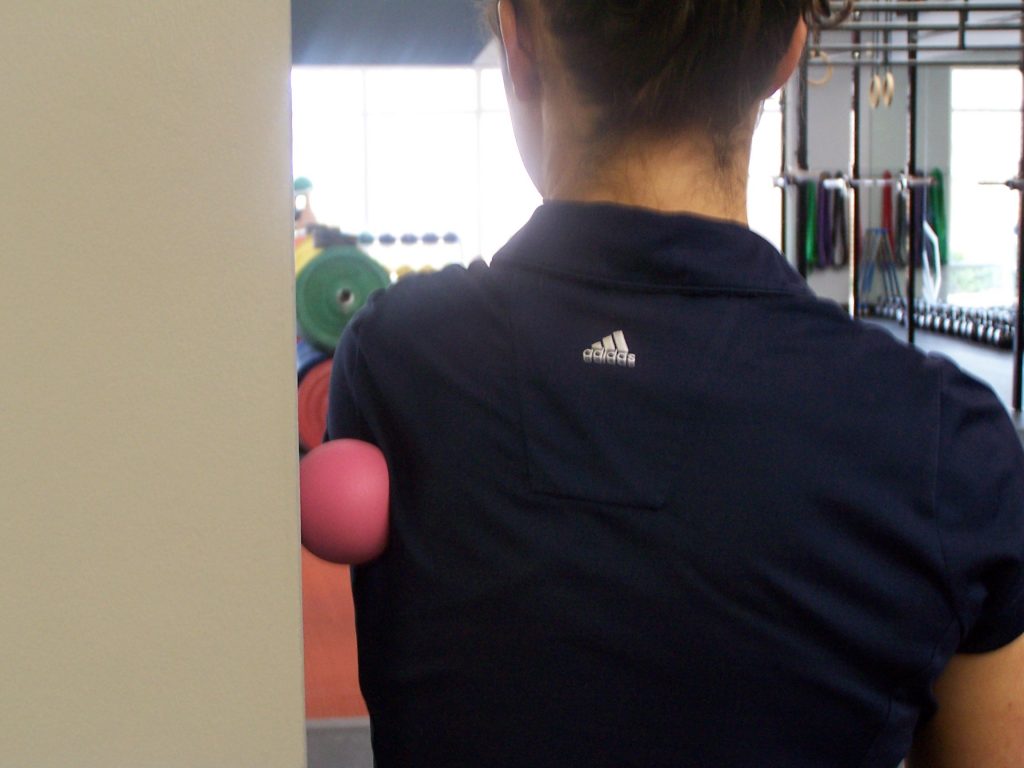Baseball season is in full-swing and since my son and his family lives in Cooperstown, NY, needless to say I’m surrounded by baseball talk and baseball fans. I love it!
I was reading an excellent baseball blog that I recommend to anyone who loves the sport. There’s been a lot of talk about shoulder injuries for both pitchers and batters so I decided to dedicate today’s blog message to the shoulder.
Even if you aren’t a baseball player, you can certainly have a shoulder injury that causes you to stop doing the things you love to do (swimming, golfing, etc.) or the things you need to do (like work &/or house chores).
The two muscles I will be discussing are:
1. The infraspinatus, which is located on the entire surface of your shoulder blade and attaches to the top of your arm.
2. The pectoralis minor, which originates on your ribs and attaches to a small bone, called the coracoid process of your shoulder blade, which is at the top of your shoulder.
We’ll begin with the pectoralis minor. I tried to put in the graphic, but WordPress just won’t do it. So, we’ll have to go with a link – oh well! As you look at this graphic:
pecs minor good graphic 1-13 consider that as the muscle is contracting it is pulling your shoulder forward. However, notice that the artery and nerves to your arm and hand go underneath the tendon where it is connecting to the bone. When your “pecs” minor is shortened by spasms, it is pulling the bone down onto the artery and nerves, causing the symptoms of tingling/numbness and restricted blood flow across your shoulder and down into your hand. Plus, as the muscle is pulling on the bone and you are trying to move in the opposite direction, you feel pain in the bone. This is the same as pulling your hair and your scalp hurting – it won’t stop until you release the tension. In this case, that means release the spasms in the muscle.
To make it easier to describe let’s say that you are treating your right pecs minor. Place your left three middle fingers on the muscle, then put your right hand on top of your left hand so you can add more pressure. Find the painful trigger point and apply enough pressure that you feel you’re getting to the base of the problem.
Hold it for 30-60 seconds and while leaving your fingers on the point, take off the pressure for about 10 seconds. Then do it again two more times.
Finally, keep holding the pressure with your left hand while you bring your right arm straight up to the ceiling and then go toward the back, like you were doing a swimming backstroke. Do this three times and you’ll be please at the relief you’ll feel.
The next muscle, the infraspinatus, does the opposite movement. While the pecs minor pulls your shoulder forward, the infraspinatus pulls your shoulder and arm backward. You use this muscle every time you throw a ball, serve a tennis ball, or reach back to grab something.
To treat your infraspinatus, take a ball such as a new tennis ball, or the Julstro Perfect Ball and place it as shown on the picture. Then press into the ball, moving your body a bit, looking for the trigger point. You’ll know immediately when you land on a point, it will hurt.
